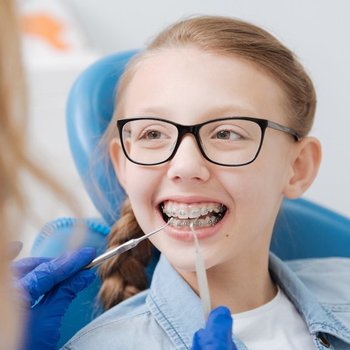Orthodontic treatments have come a long way, and with today’s technology, patients have more options than ever to achieve that dream smile. Two of the most popular choices are Invisalign and traditional braces. But how do you decide which one is right for you? In this post, we’ll break down the pros and cons of each to help you make an informed decision.
Traditional Braces
Traditional braces have been around for decades and are what most people think of when imagining orthodontic treatments.
Pros:
- Effective for Complex Issues: Braces are often recommended for more complicated dental problems, including significant misalignment, crowding, or spacing issues.
- Less Responsibility: Unlike Invisalign, which you can remove, braces are fixed, so there’s no chance of misplacing them or not wearing them enough.
- Color Customization: Particularly popular among younger patients, the bands on traditional braces can be customized in various colors.
Cons:
- Aesthetics: Braces are more noticeable than Invisalign.
- Maintenance: Braces require careful cleaning around brackets and wires, which can be a bit tedious.
- Dietary Restrictions: Some foods can damage or get stuck in braces, like popcorn, hard candies, and gum.
Invisalign
Invisalign consists of a series of clear, removable aligners custom-made for the patient’s teeth.
Pros:
- Nearly Invisible: As the name suggests, Invisalign is almost invisible, making it a discreet option for teeth alignment.
- Removability: You can take off your Invisalign aligners while eating, drinking, brushing, or for special occasions.
- Comfort: Without wires or brackets, many find Invisalign to be more comfortable than braces.
- No Dietary Restrictions: Since they’re removable, there’s no need to avoid certain foods.
Cons:
- Requires Discipline: Because they are removable, the effectiveness of Invisalign depends on the patient wearing them for the recommended 20-22 hours per day.
- Not Suitable for Everyone: Invisalign might not be the best option for severe dental problems.
- Potential for Misplacement: There’s a risk of losing your aligners if you’re not careful.
Factors to Consider:
- Age: While both treatments are suitable for all ages, Invisalign is particularly popular among adults and teenagers due to its discreet nature. Traditional braces are often recommended for younger children.
- Budget: In some cases, Invisalign can be more expensive than braces, but prices have become more comparable in recent years. Always check with your orthodontist.
- Treatment Duration: Depending on the complexity of the case, one option might be faster than the other.
- Personal Preference: Some people prefer the idea of a removable device, while others don’t want the responsibility.
Are Invisalign or Traditional Braces Right for You?
Both Invisalign and traditional braces have their unique advantages, and the decision often comes down to individual preferences and needs. The critical thing is to consult with your Davie orthodontist. They can assess the condition of your teeth, discuss your goals, and recommend the best solution tailored for you. After all, the ultimate goal is a straighter, healthier smile, and both options can get you there!
September 22, 2023

 Adult
Adult



